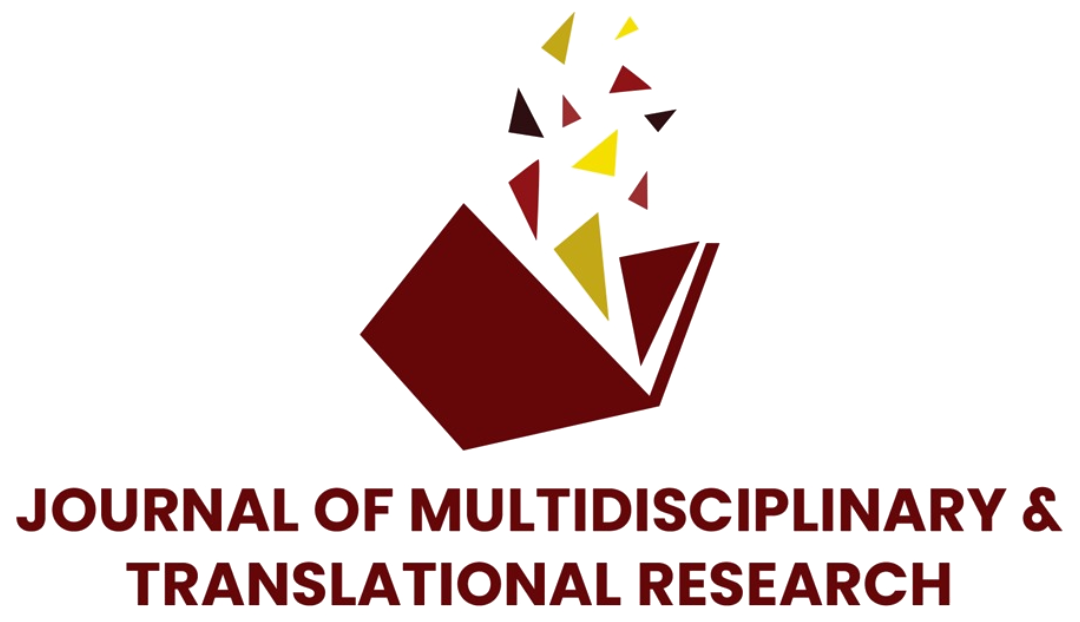| 1. | The manuscript should not be published in any journal. |
| 2. | The manuscript should obtain at least a score of 80% for originality and =pass the plagiarism detection test. |
| 3. | The manuscript should pass the preliminary spelling and grammar check with a perfect score of 100%. |
| 4. | The manuscript should demonstrate the originality of the study. |
| 5. | The manuscript should be recommended for publication by at least one peer reviewer and an editor. |
| 6. | The manuscript should adhere to strict academic standards. |
| 7. | The manuscript should comply with ethical conduct of research. |
The Editorial Process
The Editorial Board of the journal consists of professionals in the field of study who collaborate to manage the double-blinded peer-review process and monitors the publication process. The Editor-in-Chief and the Editors for each discipline constitute the Editorial Board.
The primary responsibility of the Editor-in-Chief is to supervise the publication process, together with the Editors for each discipline.
The duty of the Editors is to determine whether the submitted manuscripts are of high quality,. Each manuscript submitted for publication in the JMTR will go through the editorial workflow during the peer-review process.
The editorial workflow and the peer-review process are as follows. The manuscript submitted to JMTR is directly sent to the Editor-in-Chief for the decision of acceptance for editorial review or rejection of the manuscript based on the quality of writing and adherence to the format guidelines. The Editor-in-Chief will first assess the similarity index of the manuscript before proceeding with the review process. If the submitted manuscript fails to fulfill the expected criteria of less than 20% similarity, it will be rejected or recommended for revision and resubmission. The editorial review takes one week for the first decision after submission.
If the manuscript fails the quality assessment, the authors will be notified within one week from submission that the manuscript is rejected without prejudice for resubmission after language and format editing.
The manuscripts that pass the screening for language and format is sent to the relevant editor, based on the discipline of the study. To maintain neutrality, the identity of the author(s) is kept confidential from the editor. Using the Editor-Review Form, the editor assesses the manuscript for the quality of the technical aspects.
If the editor determines that the manuscript is technically sound, the editor sends the completed Editor-Review Form along with the recommendation “Recommended for peer review” and a recommended list of reviewers to the Editor-in-Chief to proceed straight to peer review without revision.
If the editor determines that the quality of the manuscript is not technically sound to proceed with the peer-review process, the editor sends the completed Editor-Review Form to the Editor-in-Chief along with the recommendation “Recommended for rejection”. The rejection of the manuscript is immediate if the editor recommends rejection. The author is notified that the article is not accepted for publication.
If the editor determines that a manuscript needs revision before it is submitted for peer review, the editor submits the completed Editor-Review Form along with the manuscript with recommendations for revision and a recommendation, "Recommended for peer-review after minor revisions" or "Recommended for peer-review after major revisions." The author is informed to submit the revised manuscript after minor or major revisions. The author should submit the revised manuscript within the stipulated time limit for editorial review. If the revised manuscript meets the Editorial standards, the Editor sends the Editor-Review Form with the recommendation, "Recommended for peer review" along with the list of suggested reviewers who possess the necessary knowledge in the relevant area of study.
The manuscript, the Peer-Review Form, the Editorial Policy, the results of the spelling and grammar check, the plagiarism tests, guidelines for review and a letter of request are sent to the relevant reviewers. If two peer reviewers agree to review the manuscript within the stipulated period, the completed Peer-Review Form, reviewed manuscript, and a recommendation regarding one of the following actions—"Accept as is," "Reconsider after minor revisions," "Reconsider after major revisions," or "Reject: Manuscript is flawed or not sufficiently novel" will be sent to JMTR. The author(s) will be notified about the outcome of the review process under the sanction of the Editor-in-Chief.
If both peer reviewers suggest "Accept as is", the Editor-in-Chief approves the manuscript for publication. Where the peer reviewers recommend "Reconsider after minor revisions" or "Reconsider after major revisions," JMTR notifies the author(s) and furnishes the details of the specific revisions recommended by the reviewers and advises to submit a revised manuscript along with a point-by-point response to the reviewers’ comments within a stipulated time. The revised manuscript will be sent to the reviewers for scrutiny if the reviewers recommend review after major revisions. If the peer reviewer determines that the article is of good quality, following revisions, the new Peer-Review Form will be forwarded to JMTR with the recommendation to "Accept as is." JMTR will then notify the author(s) under the sanction of the Editor-in-Chief about the acceptance of the manuscript for publication.
The Editor-in-Chief will reject the manuscript immediately where the two peer reviewers indicate "Reject: Manuscript is flawed or not sufficiently novel."
If only one of the two peer reviewers suggests the manuscript be rejected, the Editor-in-Chief may decide to reject the manuscript or to reevaluate the manuscript after revisions upon discussion with the relevant editor.
The Editors have the authority to reject a manuscript throughout the editing process if it does not meet the publication criteria and has other reasons for rejection, such as poor technical quality or inaccurate results. To guarantee an equitable peer-review procedure leading to a high-caliber publication, the Editor assigned to a particular article may not serve as an external reviewer of the manuscript.
The finalized manuscript goes through editorial processing before the edited version is published in the JMTR.



